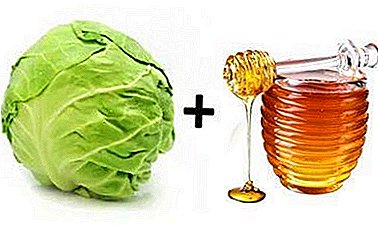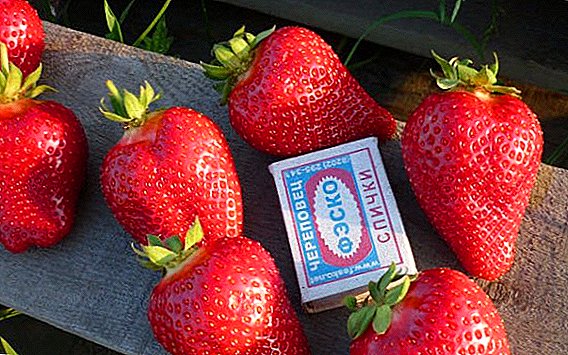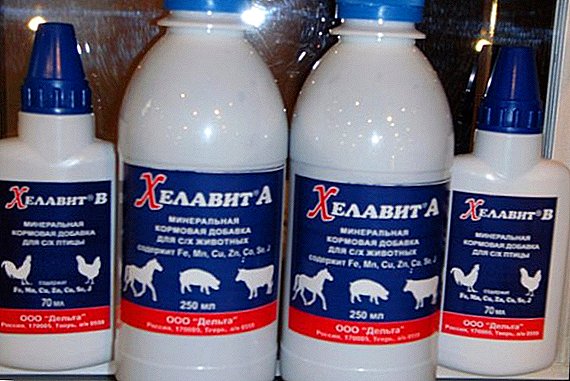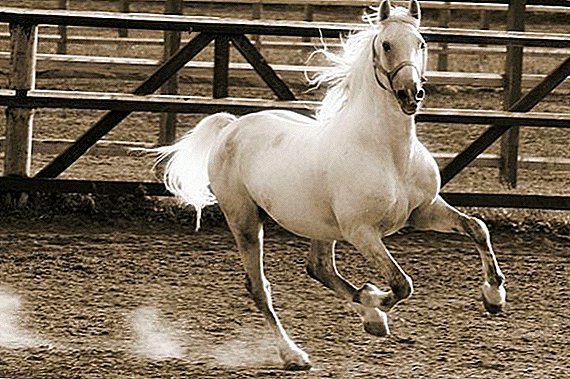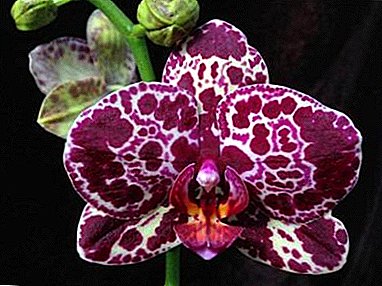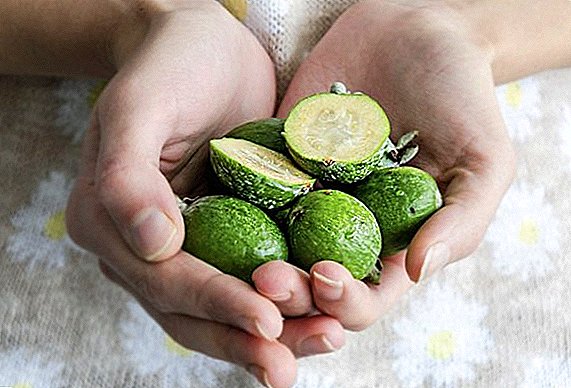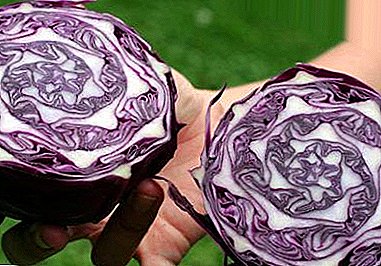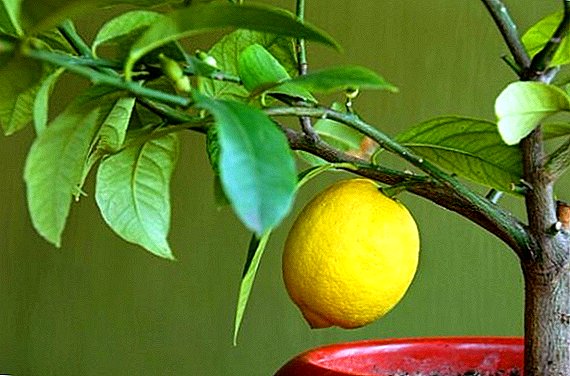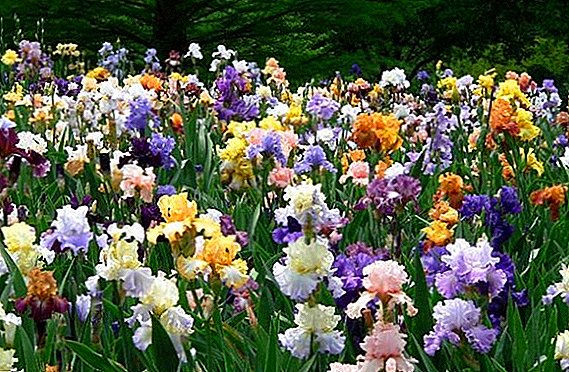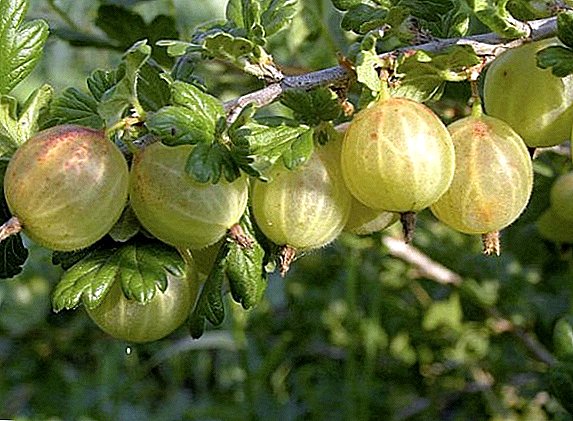 Gooseberry can be found on almost every garden plot, many people like fragrant jam from this berry. Today, the work of breeders is aimed at breeding varieties resistant to low temperatures, for the possibility of cultivation in the northern regions of the country.
Gooseberry can be found on almost every garden plot, many people like fragrant jam from this berry. Today, the work of breeders is aimed at breeding varieties resistant to low temperatures, for the possibility of cultivation in the northern regions of the country.
The article discusses the characteristics of the variety "Spring" and the conditions for its cultivation.
Inference history
In 2000, an application was submitted to the State Register of Breeding Achievements for consideration of a new variety of the gooseberry Rodnik. The authors were breeders of the Moscow Institute of Horticulture M.N. Simonov and I.V.Popova. "Spring" was obtained by crossing the variety "Lada" and seedling varieties "Purman". In 2002, "Spring" was included in the register and allowed to grow for commercial and individual purposes.
Description and characteristics
"Spring" adapts well to the new place and quickly increases the green mass.
Check out the most popular gooseberry varieties and the best varieties without thorns.
Shrub
A bush of medium height, compact, branched, long and thick lashes of shoots lignify as they mature. The shoots are prickly, but not thick, single spines are located two or three per half meter branches, mainly in the lower part of the bush. Densely growing foliage of bright green color, large, carved, five-blade. On the underside of the sheet is weakly fleece, on the upper side - glossy, streaked. 
Berries
Large, up to 5 g in weight, round-oval-shaped berries, when ripe, acquire an uneven yellow-green color with a slight reddish tinge. The skin is moderately dense, the flesh is juicy, fleshy, with a pleasant aroma. Berries have a sweet dessert taste with refreshing sourness.
Some features of the variety
Spring is characterized by early fruiting - the next year after planting. Moreover, it is self-fertile and does not require planting other varieties around.
Did you know? In different languages, the name of the culture has a different meaning: in German gooseberry means "the turn of Christ", in English - "goose berry", and in Italian - "unripe cluster".
Disease and Pest Resistance
In the course of experimental cultivation, high resistance to powdery mildew and septoria was noted, with average resistance to anthracnose. Bushes can be attacked by pests, most often by aphids, by firestroke. Spring treatments with biological insecticides and agrotechnical rules will prevent the invasion of insects.
Find out what other diseases and pests affect gooseberries and how to deal with them.

Drought resistance and frost resistance
The variety is not afraid of low temperatures, tolerates return frost well, a sharp change in temperature does not affect the ability to fruiting. Shrub tolerates a short lack of moisture.
Ripening period and yield
The variety is early ripe, the crop is harvested at the end of June. From one bush collect up to 11 kg.
Transportability
Fruits, due to the dense skin, well tolerate transportation, maintaining the presentation. To do this, they must be collected during the period of technical maturity.
Growing conditions
Despite the frost resistance, the gooseberry loves the sun, and it is desirable to plant it on the side of the plot lit for most of the daylight hours. Strong drafts can adversely affect the rooting of seedlings, it is desirable to plant them in the shelter.
We advise you to familiarize yourself with the distinctive features of the gooseberry variety "Consul", "Grushenka", "Honey", "Malachite", "Commander", "Kolobok", "Krasnoslavyansky".
 The root system of the plant does not like overwetting: lowland places, the proximity of groundwater is contraindicated to him.
The root system of the plant does not like overwetting: lowland places, the proximity of groundwater is contraindicated to him.
Ideal for the structure of the soil options are loams, while you need to make sure that the acidity is low. If the soil is acidic, it can be brought to the desired level by liming. Usually this is done a few months before landing.
Important! Do not plant gooseberries after other berry crops, they greatly deplete the soil.
Time and landing scheme
Spring planting should be carried out in the early stages, as soon as the snow melts and thaws the top layer of soil. The best time (preferably) for planting bushes is the last decade of September, before the first frosts the seedling has time to take root, calmly survive the winter and get stronger during this period.
A few months before planting, the plot is cleared, they dig up and remove all plant residues and other garbage, if necessary they lime it.
The pits are made up to 60 cm in depth, about 1 meter in width. Fertilizers are put on the bottom: a bucket of humus, 50 grams of superphosphate and calcium chloride (if the ground is too heavy, add river sand).  Gooseberry planting pattern When planting several copies between rows leave a distance of one and a half meters. When commercial cultivation on large areas between the rows can withstand the same distance.
Gooseberry planting pattern When planting several copies between rows leave a distance of one and a half meters. When commercial cultivation on large areas between the rows can withstand the same distance.
Seedlings also need to prepare: for several hours the root shoots are soaked in a growth stimulator, for example, "Appin". Shoots are shortened to the fifth bud to get a compact bush in the future.
The seedling is lowered into the pit, holding it vertically, the roots straighten and gradually sprinkle the soil, ensuring that the root collar remains level with the surface.
After planting, the soil is tamped around the root collar and watered abundantly, and then covered with mulch (peat, sawdust).
VIDEO: HOW TO PLANT KNITTING
Did you know? Gooseberry is useful to eat fresh to those who are engaged in heavy production, working with metals or chemicals. Berry is able to remove toxins and poisons from the body.
Basics of seasonal care
Gooseberry "Spring" is unpretentious in the care, watering and feeding, weeding and loosening the soil - everything, like in other fruit shrubs. Be sure to carry out timely pruning.
Watering
If there is enough rainfall, then watered "Spring" is not recommended. It is not demanding of moisture, it is enough that the soil was moderately wet. With prolonged absence of rain, the gooseberry needs watering. Watered around the root so that the moisture is evenly distributed near the root shoots. It is important that the soil was moderately moist during the formation of ovaries.
Important! Do not overdo it with the amount of water, you do not need to fill in the root neck, it is enough to moisten the soil well.

Soil care
Weeding and loosening the soil in a circle are mandatorythe first saves the plant from parasite plants sucking moisture and nourishment from the soil, the second saturates the root system with oxygen.
Top dressing
Immediately after planting, top dressing is not needed; a sufficient amount of them was deposited in the pit. Further, during the formation of buds, 50 grams of nitroammophoska are introduced into the soil. During the formation of ovaries, wood ash is added to the soil, about 200 grams. After harvesting, make a liquid organic (1 l per 10 l of water): mullein or infusion of bird droppings. The following spring, before the buds start blooming, nitrogen fertilizers are applied: ammonium nitrate or urea up to 20 grams.
Pruning
Pruning is carried out in early spring or late autumn. Remove broken, damaged and diseased shoots. Thin out the crown, leaving the most fruitful and young shoots.
Forming involved when the plant has grown more than twenty branches.
We recommend that you familiarize yourself with the methods of cutting gooseberries.

Winter cold protection
This variety was bred for cultivation in regions with harsh winters, so it does not need shelter for the winter.
The advantages and disadvantages of the variety
Among the advantages of the variety:
- fast ripening;
- dessert taste of fruit;
- resistance to drought and low temperatures;
- large amount of harvest;
- good transportability;
- immunity to major diseases of culture;
- large selection in the application.
Gooseberry is a useful and tasty berry, it can be used by diabetics and losing weight. Fruits eat fresh, prepare desserts from them, fill pastries, prepare fragrant jam or jam for the winter. Fans of homemade alcohol recommend a tasty and healthy homemade wine.
Video: Review of the gooseberry "Spring"
Reviews




